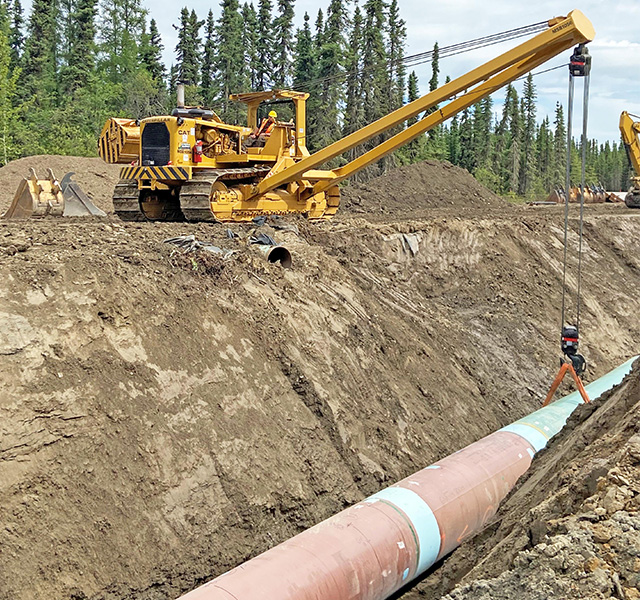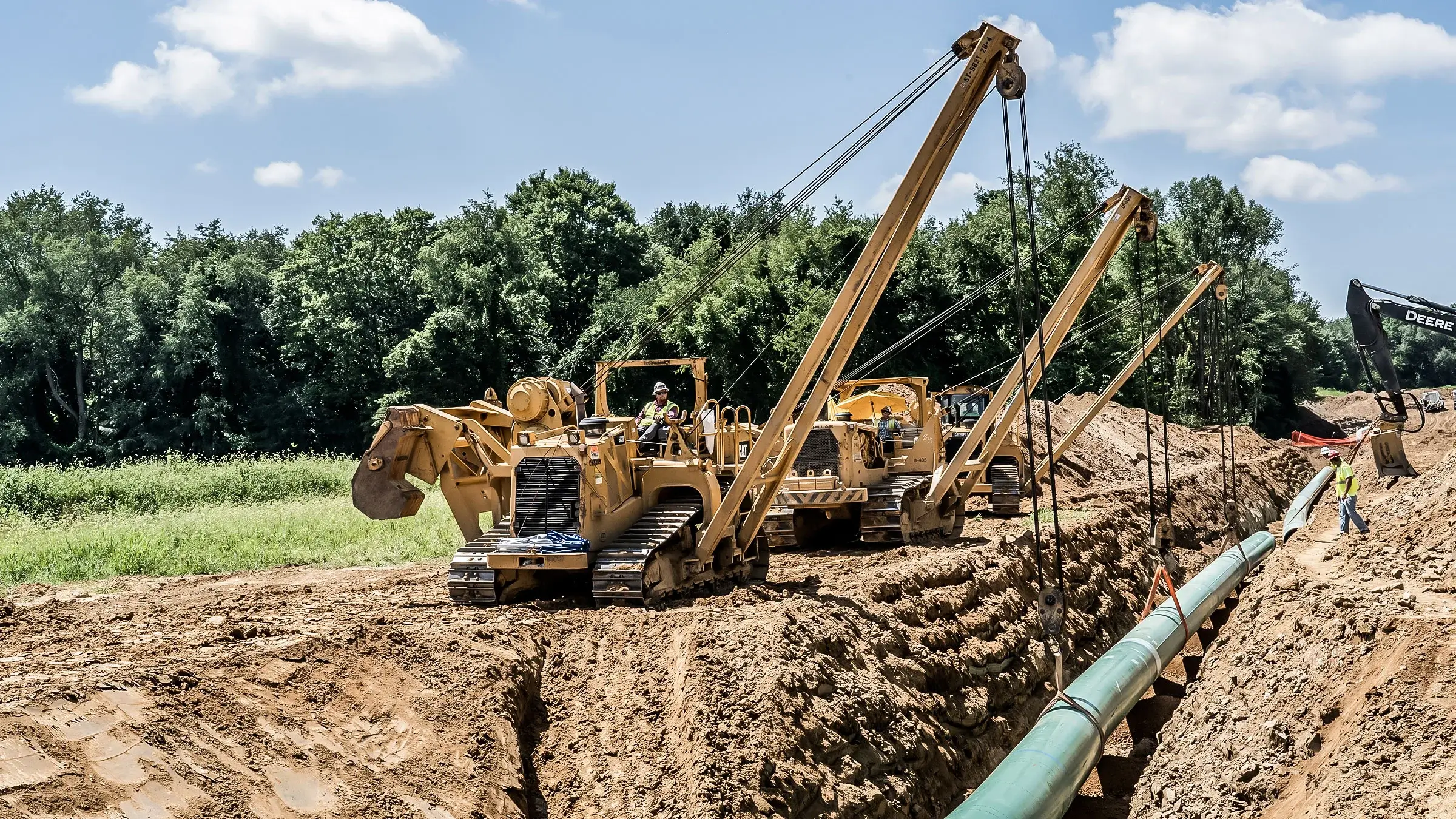How Long Does Your System’s Lifespan? Insights From Creek Pipe HDPE installation
A Deep Dive Into Pipes Installation: Important Factors and Considerations for Successful Projects
Effective pipe installation is an important element of engineering projects. It involves a variety of variables, from product option to accurate sizing and style. Each decision can significantly influence the system's performance and long life. Recognizing these parts is vital for preventing expensive errors. Creek Pipe reviews. As groups browse through the intricacies of installation, numerous vital factors to consider arise that warrant interest. What are the essential aspects that can make or damage a piping task?
Recognizing Pipe Products and Their Applications
When picking pipe products, one have to take into consideration the particular applications and ecological problems they will encounter. Various materials supply distinct properties that satisfy various demands. For example, PVC is lightweight and immune to deterioration, making it excellent for water distribution systems. Conversely, steel pipes supply stamina and sturdiness, appropriate for high-pressure applications but might require protective coatings to stop rust.Copper pipes are preferred for pipes due to their antimicrobial buildings and convenience of installation, while polyethylene is often used in underground applications due to its adaptability and resistance to cracking.The option of product also rests on temperature level extremes, chemical direct exposure, and installation location. For high-temperature applications, products like CPVC or PEX can be useful. Ultimately, understanding the attributes and constraints of each product help in making notified decisions that boost system performance and durability.
Value of Proper Sizing and Layout
Appropriate sizing and layout of pipes are essential for making sure optimal circulation prices and decreasing stress loss. These factors additionally play a significant role in figuring out the compatibility of materials utilized in the installation. A methodical technique to sizing and design can greatly improve the efficiency and long life of a piping system.
Influence On Circulation Prices
Circulation prices in piping systems are seriously affected by the sizing and layout of the pipes. Properly sized pipes assure that the fluid can relocate efficiently, minimizing disturbance and maximizing circulation ability. Oversized pipelines can lead to reduced circulation rates, while small pipes may restrict circulation, causing increased friction and prospective obstructions. The design needs to additionally take into consideration elements such as pipe product, internal surface area level of smoothness, and design, as these add to the total performance of liquid transport. Additionally, the plan of fittings and links within the system can impact flow rates. Precise attention to pipe sizing and design is important for enhancing flow performance in any type of piping installation project.
Stress Loss Factors To Consider

Just how can pressure loss significantly influence the efficiency of a piping system? Pressure loss is a critical variable that can substantially lessen the performance of liquid transportation systems. When pipelines are improperly sized or created, too much pressure loss might occur, leading to lowered flow prices and enhanced energy consumption. This inefficiency can result in higher functional costs and potential system failures. Proper sizing and layout are vital to lessen stress loss, ensuring that fluid dynamics remain optimal throughout the system. Designers should very carefully take into consideration elements such as pipe size, length, and product to accomplish a reliable balance. Eventually, resolving stress loss during the style phase can enhance reliability and longevity, making it essential for successful piping projects.
Material Compatibility Aspects
Pressure loss is not the only element that can impact the efficiency of a piping system; material compatibility likewise plays a significant function in total efficiency. Making sure that the products used in a piping system are suitable with the fluids they will certainly move is essential. Various products can react negatively to various chemicals, resulting in deterioration, degradation, or contamination. This can ultimately jeopardize the integrity of the system and affect its long life. In addition, appropriate sizing and layout are very important to fit thermal development and contraction, which can better affect product efficiency. Examining factors such as temperature level, stress, and chemical composition is vital in picking suitable products, thereby improving system reliability and decreasing maintenance prices in the long-term.
Methods for Accurate Pipe Installation
Precise pipe installation is essential for ensuring system efficiency and durability. Several techniques can improve the precision of this procedure. First, mindful dimension is important; installers need to use top quality tools such as laser levels and measuring tape to identify the specific sizes and angles needed. Next off, appropriate pipe cutting strategies, like using a pipe cutter instead of a hacksaw, guarantee clean sides that help with far better connections. Furthermore, using positioning devices, such as pipe jigs, can notably enhance precision during assembly. It is additionally recommended to consider thermal expansion; permitting sufficient spacing and growth joints can protect against future misalignments. Ultimately, the installation team ought to comply with supplier standards to abide by specific recommendations related to each pipe kind. By applying these strategies, the probability of leaks and system failings lowers, eventually adding to an extra trusted piping system.
Guaranteeing Pipe Positioning and Support
Correct positioning and support are crucial to the integrity and efficiency of any piping system. Misalignment can cause increased stress on joints, prospective leaks, and lowered effectiveness. To ensure correct placement, it is important to utilize appropriate tools such as laser degrees and positioning assesses. These instruments assist attain exact positioning, guaranteeing that pipes are set up based on style specifications.Support systems must be designed to accommodate thermal growth and tightening, as well as the weight of the pipelines and their materials. Picking the best kind of assistances, wall mounts, and braces is essential. Each need to be installed at defined intervals to avoid sagging or excessive stress and anxiety on the pipelines. Routine assessments following installation can assist determine any kind of imbalances or signs of insufficient assistance. By focusing on placement and support, one can considerably enhance the durability and functionality of the piping system.
Typical Installation Blunders to Prevent

Checking and Inspection for Quality Guarantee
Although the installation process may appear total, comprehensive testing and examination are important to making sure the long-term dependability of a piping system. Numerous approaches are used to evaluate the honesty of the installation, including stress examinations, visual inspections, and non-destructive testing (NDT) methods. Stress tests validate that the system can hold up against functional conditions without leaks, while visual assessments aid recognize any type of noticeable issues in the pipelines or joints. NDT approaches, such as ultrasonic or radiographic testing, supply insights right into the product stability without endangering the system.Additionally, recording the testing results is crucial for future referral and compliance with industry standards. This paperwork serves not just as a quality control action but also as a lawful protect. Inevitably, a complete screening and evaluation procedure adds to the total security and performance of the piping system, ensuring it satisfies the necessary performance requirements gradually.
Upkeep Tips for Long-lasting Pipe Equipments
Maintaining a pipeline system requires regular assessments and checking to determine possible problems prior to they rise. Carrying out reliable cleaning techniques is also crucial for protecting against buildup that can impede efficiency. With each other, these methods add to the longevity and reliability of the piping infrastructure.
Normal Inspections and Tracking
Normal inspections and surveillance are important for making sure the durability and performance of pipe systems. Normal analyses can assist identify potential issues such as leakages, deterioration, or clogs before they escalate right into considerable troubles. Carrying out a routine for regular inspections permits the early discovery of deterioration, enabling prompt repair services. Monitoring stress levels and circulation rates can additionally offer natural gas line installation important understandings right into system performance, making sure that any type of abnormalities are addressed quickly. Furthermore, making use of advanced modern technologies, such as infrared cameras or ultrasonic screening, can improve the examination process by providing detailed information regarding pipe conditions. Ultimately, constant monitoring and examinations add to the reliability and durability of pipe systems, lowering the threat of costly fixings and downtime.

Efficient Cleansing Methods
Efficient cleansing techniques are necessary for maintaining the honesty and capability of pipe systems. Consistently set up maintenance, such as flushing systems with water, helps remove debris and build-up. For more persistent clogs, view publisher site specialists commonly recommend hydro jetting, which makes use of high-pressure water to tidy pipe interiors extensively. Chemical cleansers can additionally be utilized but need to be picked thoroughly to avoid damaging pipes. Furthermore, employing devices like pipe cameras can help in recognizing trouble areas and guaranteeing efficient cleaning. Keeping correct drainage and preventing the disposal of dangerous compounds down pipelines better add to long life. Generally, constant cleaning methods not only enhance performance however additionally lower the risk of expensive fixings in the future.
Regularly Asked Questions
What Are the Labor Prices Connected With Pipe Installation Projects?
Labor prices for pipe installation tasks differ commonly, affected by factors like project complexity, regional wage prices, and needed skills (Creek Pipe contact). Typically, these costs can vary from $50 to $100 per hour, depending upon the workforce entailed
How Do Regional Rules Affect Pipe Installation Practices?
Neighborhood policies significantly influence pipe installation techniques by establishing safety and security standards, material specifications, and installation approaches. Compliance with these regulations guarantees project security, environmental management, and adherence to local codes, ultimately impacting total job success and costs.
What Tools Are Essential for Pipe Installation?
Crucial devices for pipe installation consist of pipe wrenches, cutters, and installations. In addition, sealants, measuring tapes, and degrees guarantee accuracy and longevity. Proper devices promotes performance and adherence to safety and security standards throughout the installation process.
Exactly How Can Weather Conditions Effect the Installation Refine?
Climate condition significantly influence the installation procedure, as extreme temperatures, rain, or wind can affect product stability, worker safety, and job timelines. Proper preparation and organizing are important to alleviate these possible challenges throughout installation.
Are There Service Warranties for Mounted Pipe Equipments?
Guarantees for mounted pipe systems commonly vary by producer and installation contractor. Usually, they cover issues and craftsmanship for a given period, making sure the system's reliability and supplying peace of like this mind to the property proprietor.